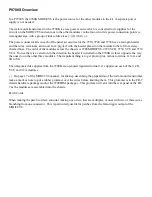
2-17
2.Basic splicing operation
|
Optical fiber splicing
2. Basic splicing operation
The fusion splicing is a method of melting and connecting the point of the optical
fiber by heat of electrical discharge. Because optimum arc conditions are different
depending on environment (atmospheric pressure and temperature) and the
electrode condition (wear-out and adhesion of the glass) and the optical fiber
(manufacturer and SMF/MMF, etc.), appropriate arc condition is necessary to make
a low splice loss.
If you make a splice on standard program such as “SM:1c”, perform an arc test with
the fiber being spliced before fusion splicing.
In the Auto mode, TYPE-72M12 analyzes the arc and has the function to calibrate
the arc condition automatically at each splice. Therefore, arc test is not needed
usually in the Auto mode.
As an exception, perform an arc test in the following situations to
calibrate the arc power and position.
•Poor splice performance
(high or inconsistent splice losses, poor splice strength)
•After electrode replacement
•Extreme changes in temperatures, humidity or air pressure
●
Arc test
Good arc state
Arc Center
Start splicing
The arc center is au-
tomatically adjusted.
The arc power is au-
tomatically adjusted.
Prepare the fiber and perform the arc test again.
Prepare the fiber.
Arc test
OK
NG
The adjusted arc power level is stored even if the splicer is turned off.
















































